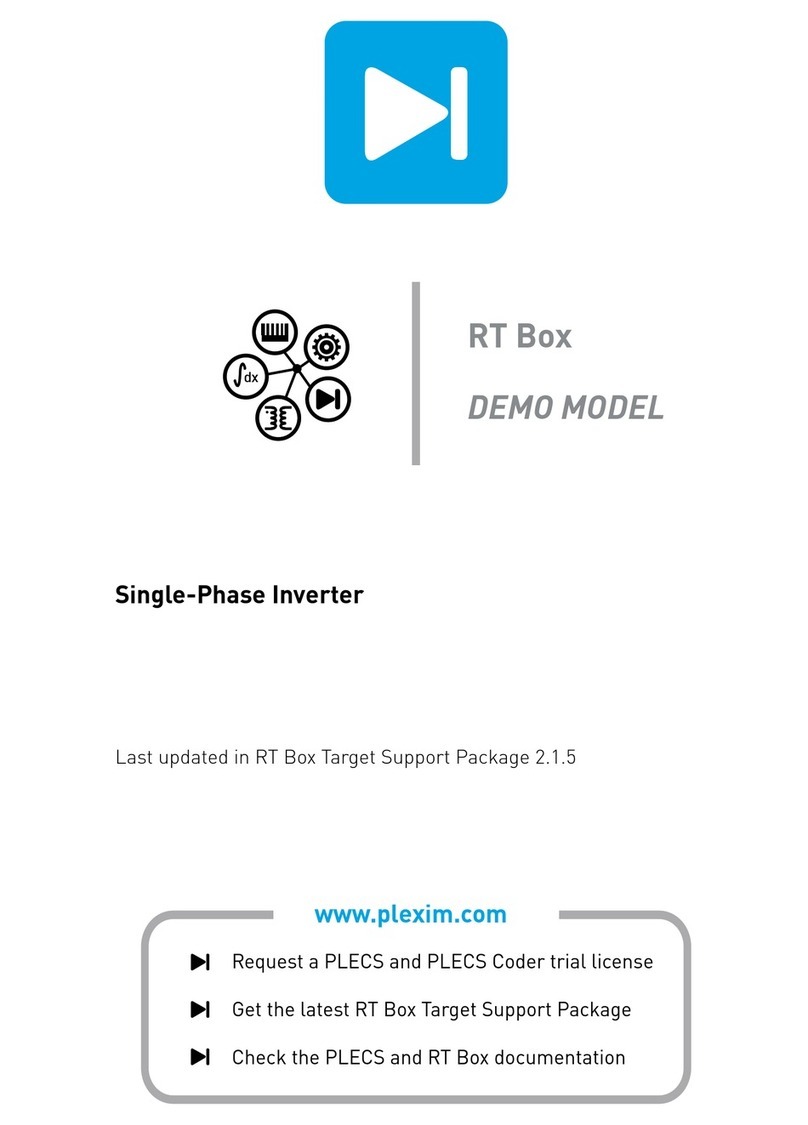
Boost Converter
1 Overview
This RT Box demo model features a boost converter with a resistive load and closed-loop current con-
trol. The nominal operating condition is given at
• 52 kW power,
• 480 V input voltage and
• 108 A inductor current reference.
This document describes the implementation of the power stage and controls in PLECS and the real-
time deployment of the system on two RT Boxes. For such a “virtual prototyping” configuration the
two RT Boxes are connected front-to-front with two 37 pin Sub-D cables to exchange digital PWM sig-
nals and analog current measurements.
The chosen discretization step sizes and average execution times for each subsystem in the Boost con-
verter model are shown in Tab. 1. The discretization step size parameter specifies the base sample
time of the generated code and is used to discretize the state-space equations of the plant and control
model. The execution time represents the actual time it takes the processor on the RT Box to calculate
the plant or control model.
Table 1: Discretization step size and average execution time of real-time models with two RT Box 1
Subsystem Discretization Step Size Average Execution Time
Plant 2 µs 0.9µs
Controller 50 µs(fsw = 20 kHz)0.5µs
1.1 Requirements
To run this demo model, the following items are needed (available at www.plexim.com):
• Two PLECS RT Boxes and one PLECS and PLECS Coder license
• The RT Box Target Support Library
• Follow the step-by-step instructions on configuring PLECS and the RT Box in the Quick Start guide
of the RT Box User Manual.
• Two 37 pin Sub-D cables to connect the boxes front-to-front.
Note that this demo model is targeted at two RT Boxes application, with one running the Plant and
the other running the Controller. In this way, the execution time of each real-time target is minimized.
Besides, the setup can easily transition to a HIL or RCP test later on.
However if the user has only one RT Box available, please check the corresponding models targeted
for one RT Box application. In this case, two 37 pin Sub-D cables are still needed to connect in front
Analog Out interface with Analog In interface, and Digital Out interface with Digital In interface.
• For RT Box 2 and 3, by default the multi-tasking feature is enabled in this demo. “Controller” part
is circled with a Task frame block, and runs in one core. The rest of the circuit on the schematic be-
longs to the “Base task”, and runs in another core. In this way the computational effort is split onto
different cores. Please check the default setting under Scheduling tab of the Coder options... win-
dow.
• For RT Box 1, multi-tasking is disabled since there is only one CPU core available for calculating
the model, which includes both Plant and the Controller.
www.plexim.com 1


































